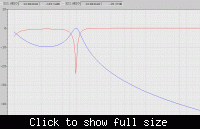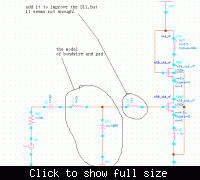lsfeng
Junior Member level 1
hello ,everyone
I am a begainer on the matching network,and come about some questions as follows:
1 the pi-match could be seen as two L-match's combination,so the resonating
frequency must be the same ?
2 if the circuit has good match on the unexpection frequency , so the Q of the
circuit is too low or not?
3 the matches I have done is on the single frequency,so how to make a wideband
match using the pi network or other methord?
that 's all , thank you

I am a begainer on the matching network,and come about some questions as follows:
1 the pi-match could be seen as two L-match's combination,so the resonating
frequency must be the same ?
2 if the circuit has good match on the unexpection frequency , so the Q of the
circuit is too low or not?
3 the matches I have done is on the single frequency,so how to make a wideband
match using the pi network or other methord?
that 's all , thank you

